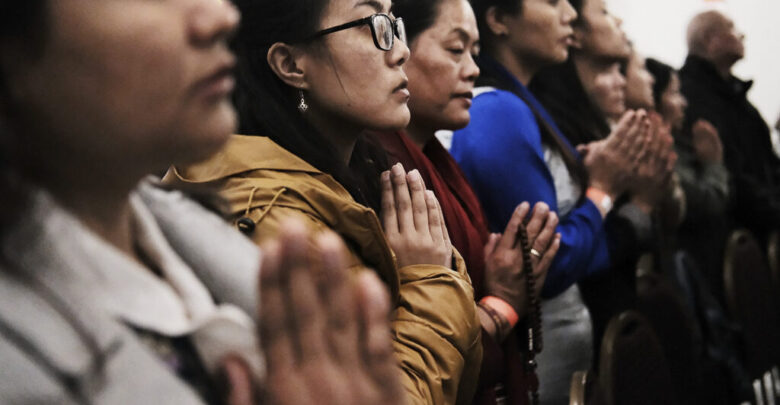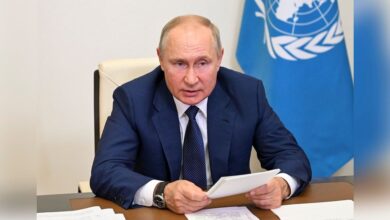

NEW YORK — Rajesh Shrestha from Nepal’s capital Kathmandu was on his motorbike when the ground underneath him started to shake. Shrestha, who was 41 at that time, stopped and jumped off.
He was caught in the second most devastating earthquake to hit Nepal on May 12, 2015.
“Everyone had stopped what they were doing,” he told Zenger News.
Shrestha and his family had already lost their home, belongings, and business in the first earthquake that occurred less than three weeks before.
For the next few months, the city trembled from more than 100 aftershocks. Kathmandu—Shrestha’s home and the city of temples on Himalaya’s foothills—was reduced to rubble.
Over 9,000 people lost their lives in the two earthquakes, while 23,000 were injured. Since 75 percent of Nepal is covered by mountain ranges, the earthquakes created avalanches and landslides that crushed more than 500,000 houses, apart from schools, hospitals, banks, and businesses.

Broken roads left people dependent on relief aid and supplies delivered by helicopters.
“We shared food with other families and lived in tents. I was depressed. I couldn’t think of anything positive,” Shrestha said.
He still had a family to care for, including an autistic nephew, and had to find a way to rebuild finances. So, he bought a one-way ticket to New York. In June, he arrived at the John F. Kennedy International Airport with two suitcases.
Shrestha is one of 14,800 Nepalese who came to the US because of the 2015 earthquake. Yet, they were not the first wave of Nepalese to go to the US.
Many started arriving in 1990. The exodus continued through 2006 as citizens sought asylum during the Maoist insurgency that dethroned Nepal’s monarchy. During this time, the country transitioned from an absolute monarchy to a constitutional monarchy due to human rights violations by security forces.
In February 1996, the Maoist United People’s Front leaders launched a “People’s War” that led to violence in more than 50 of the country’s 75 districts. In 2008, the 240-year-old monarchy was abolished. Nepal switched from a Hindu monarchy to the Federal Democratic Republic.
But in 2015, the country was in political turmoil again after the constitution of Nepal had affirmed the country as a secular federal parliamentary republic. These social, economic, and infrastructural instabilities drove Nepalese like Shrestha abroad.
“The state [Nepal] could not match their citizens’ needs in basic ways,” Sienna Craig, an anthropology professor at Dartmouth who has extensively studied Nepalese culture, told Zenger News.
Most of those who took refuge in the US established roots in Jackson Heights, Queens, the epicenter of South Asian communities in New York City, where they opened restaurants and businesses.

But those who escaped to the US faced a series of bureaucratic problems that make it hard for them to get and keep good jobs. One of these is the rules governing visas.
On June 24, 2015, the Barack Obama administration granted Nepalese Temporary Protected Status (TPS), a visa given to those escaping armed conflict, environmental disasters, or other extraordinary conditions in their home countries. A TPS holder cannot be deported and is authorized to work in the US for a specific period but must renew employment authorization every six to eighteen months.
Shrestha arrived in New York City 11 days before the US declared TPS, so he soon became a beneficiary.
He learned how to speak English in Nepal, but it wasn’t his mother tongue. Adapting to this new city with a thick accent was a challenge. After a few months of looking for a job, he found one at a Japanese restaurant in Brooklyn. Soon, he was sending money home.
“Nepal’s economy depends on remittances,” said Craig, indicating many contribute to rebuilding their communities in Nepal from abroad.
Nepal received $8.1 billion in remittances in 2020, 24 percent of the Gross Domestic Product. In 2015, remittances of $6.73 billion comprised 27.6 percent of the Gross Domestic Product.
When Shrestha tried to find a better job, he realized his options were limited. Big companies wouldn’t hire him because his work permit allowed him to stay in the US temporarily.
He could not study because of a lack of funds or start a business either.
“If you invest some money in a business, what will you do with it when you have to exit the country?” he said.
He had no option but to continue working at the restaurant.
“I work back, front, everywhere they need me.” To keep his job, he has to do everything he is asked to do. “They know I don’t have a choice.”
In 2018, the Donald Trump administration tried to end TPS for Nepalese effective June 2019 on the basis that Nepal no longer suffered from adverse conditions.
But Nepal was and is still facing those conditions. For the first two years after the 2015 earthquakes, 70 percent of Nepalese lived in temporary shelters. By 2019, three-quarters of the affected population had a home, while many were still rebuilding.
Government loans existed in limited capacities, and paying off debt became a burden only few could overcome. The newly formed democracy dealt with an unclear division of authority. The vulnerability to floods and dengue outbreaks caused more havoc.
“Building back fallen cities takes time, and acute moments of disaster usually spread out over years or even decades,” Craig said.
The Trump administration tried to end TPS for other countries as well—an effort stymied by lawsuits. The 9th US Circuit Court of Appeals overturned the administration’s decision after finding substantial evidence that these termination efforts were motivated by racism, according to a report by the Center for American Progress.
These rulings are currently in effect.
Meanwhile, the pandemic hit, making Shrestha’s predicament even more daunting. The restaurant laid him off on March 16, 2020, and less than a week later, he was bedridden with a fever. His test for Covid-19 came back positive.

However, there was hope. On March 27, 2020, the Coronavirus Aid, Relief, and Economic Security (CARES) Act was signed, which included relief for TPS recipients.
But while Shrestha was out of work for 97 days and applied for unemployment insurance with the encouragement of his roommates, his application did not make through. Strapped for cash, he called the labor department numerous times, only to be put on hold for hours at a time.
“I tried to be strong by myself. Luckily, I had some savings and friends,” Shrestha said.
Maya Gurang, a senior case coordinator at Adhikaar, a non-profit for the Nepalese, believes one of the biggest challenges for Nepalese TPS holders under Covid has been receiving unemployment insurance.
“We work with a lot of low-wage industry members who have little to no literacy levels,” Gurang told Zenger News. “It’s difficult for them to communicate with people from different agencies.”
The department of labor responded to the claims via email.
“Every state’s unemployment system has been tested during this crisis. But in New York, we have moved mountains to connect more than 4.7 million New Yorkers with over $95 billion in benefits,” the email states.

The email also states that claims that were not paid required additional documentation like employment authorization, identity, or wage documents to calculate benefit rates.
“The safeguards built into the application process are necessary to prevent the type of unemployment insurance fraud we see across the country during this pandemic — and are required by law,” the mail states.
Even simple tasks, such as getting the new federally accepted form of identification, a REAL ID, are complicated for a TPS holder. Shrestha says different government agencies don’t seem to recognize each other’s authority.
When food deliveries were reopened, Shrestha was called back but as a delivery man.
Shrestha renewed his employment authorization and TPS more than six times— the last one for a four-month work permit till Jan. 4, 2021. This endless cycle of filing applications, renewing documents, and paying a hefty filing fee has left him feeling helpless.
However, under the Joseph R. Biden administration, TPS for Nepalese has been extended to Oct. 4, 2021, which gives those like Shrestha some respite. There are 10,160 Nepalese TPS holders in the US as of 2021, as per US Citizenship and Immigration Services data.
Angbabu Sherpa, 37, another TPS holder, came to New York in 2014 to work on an art installation on a B-2 visa, which allows travel and recreation.

But the following year, his family, too, lost their east Nepal home and their field of crops in the earthquake. Without tourism, the trekking business his brothers owned shut down. Sherpa’s wife and children, his parents, six siblings, and their wives and children could barely survive.
To send more funds home, he tried getting a better job but couldn’t. Now, Sherpa lives in a Jackson Heights apartment with three roommates and works as an Uber driver.
“I’ve lived here six, almost seven years. I know my community and the area of New York. If I go home, I’ll have to start all over again.”
The American Dream and Promise Act of 2021, a bill led by Biden’s team, proposes to make TPS holders adjust to lawful permanent resident or green-card holder status. TPS holders apply for citizenship when eligible.
The bill passed the House of Representatives in March and has since moved to the Senate, where a second hearing was held in June. Biden urged Congress to take action with great urgency in his statement on July 17.
Shrestha hopes this happens. Like Sherpa, he has spent years assimilating into the US, which is why he thinks the bill would help others like him find the stability to establish themselves.
“If I get permanent residency, I can get training. I can support my family, and I can support my community.”
(Edited by Amrita Das and Anindita Ghosh)
The post Quake-Hit Nepalese Bet Big On ‘American Dream And Promise’ appeared first on Zenger News.




